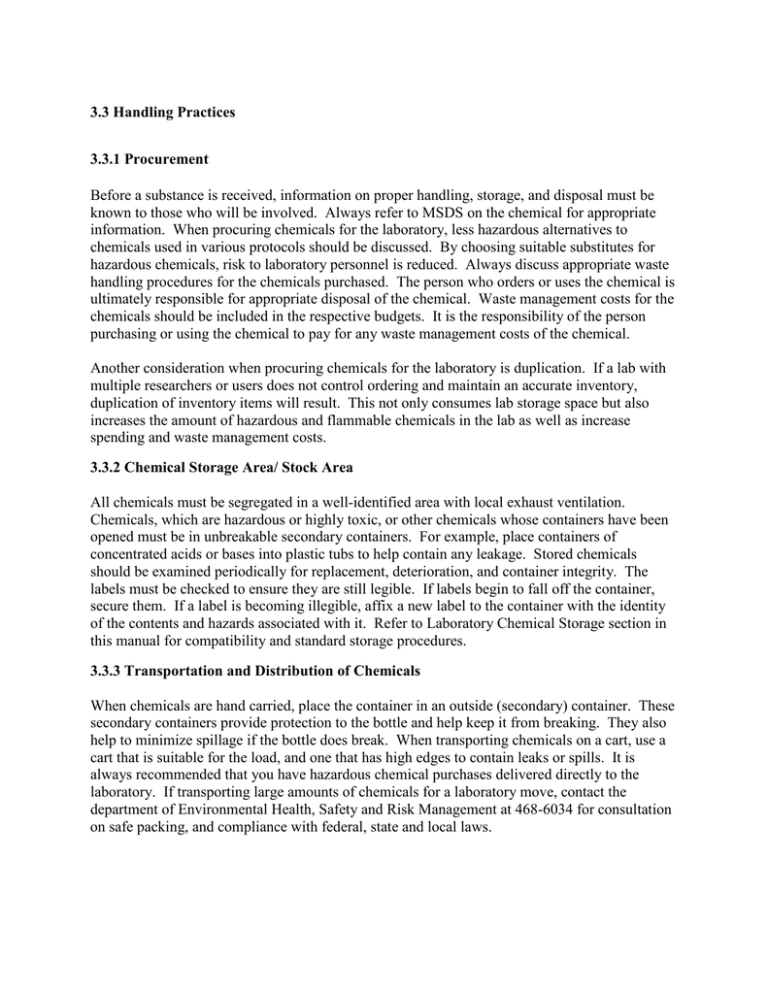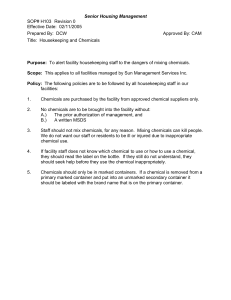Document 10416769
advertisement

3.3 Handling Practices 3.3.1 Procurement Before a substance is received, information on proper handling, storage, and disposal must be known to those who will be involved. Always refer to MSDS on the chemical for appropriate information. When procuring chemicals for the laboratory, less hazardous alternatives to chemicals used in various protocols should be discussed. By choosing suitable substitutes for hazardous chemicals, risk to laboratory personnel is reduced. Always discuss appropriate waste handling procedures for the chemicals purchased. The person who orders or uses the chemical is ultimately responsible for appropriate disposal of the chemical. Waste management costs for the chemicals should be included in the respective budgets. It is the responsibility of the person purchasing or using the chemical to pay for any waste management costs of the chemical. Another consideration when procuring chemicals for the laboratory is duplication. If a lab with multiple researchers or users does not control ordering and maintain an accurate inventory, duplication of inventory items will result. This not only consumes lab storage space but also increases the amount of hazardous and flammable chemicals in the lab as well as increase spending and waste management costs. 3.3.2 Chemical Storage Area/ Stock Area All chemicals must be segregated in a well-identified area with local exhaust ventilation. Chemicals, which are hazardous or highly toxic, or other chemicals whose containers have been opened must be in unbreakable secondary containers. For example, place containers of concentrated acids or bases into plastic tubs to help contain any leakage. Stored chemicals should be examined periodically for replacement, deterioration, and container integrity. The labels must be checked to ensure they are still legible. If labels begin to fall off the container, secure them. If a label is becoming illegible, affix a new label to the container with the identity of the contents and hazards associated with it. Refer to Laboratory Chemical Storage section in this manual for compatibility and standard storage procedures. 3.3.3 Transportation and Distribution of Chemicals When chemicals are hand carried, place the container in an outside (secondary) container. These secondary containers provide protection to the bottle and help keep it from breaking. They also help to minimize spillage if the bottle does break. When transporting chemicals on a cart, use a cart that is suitable for the load, and one that has high edges to contain leaks or spills. It is always recommended that you have hazardous chemical purchases delivered directly to the laboratory. If transporting large amounts of chemicals for a laboratory move, contact the department of Environmental Health, Safety and Risk Management at 468-6034 for consultation on safe packing, and compliance with federal, state and local laws.





